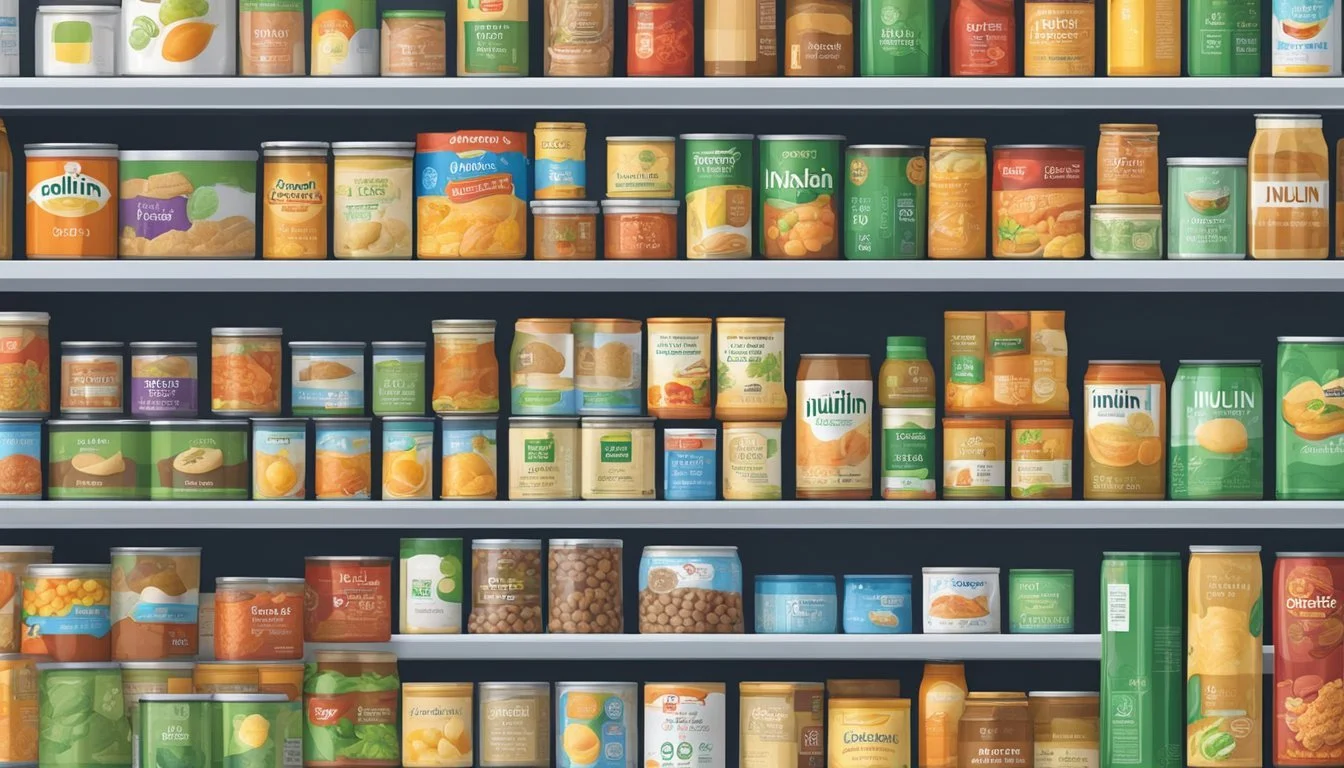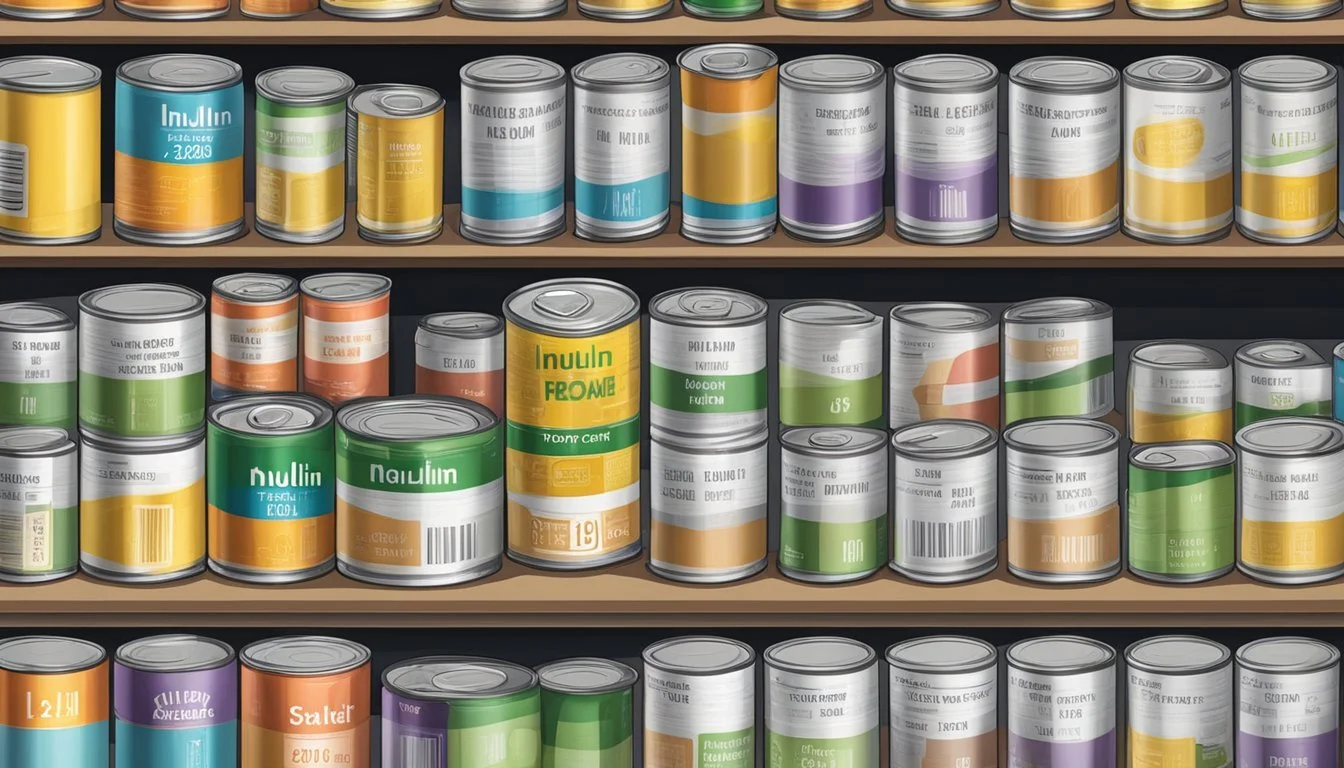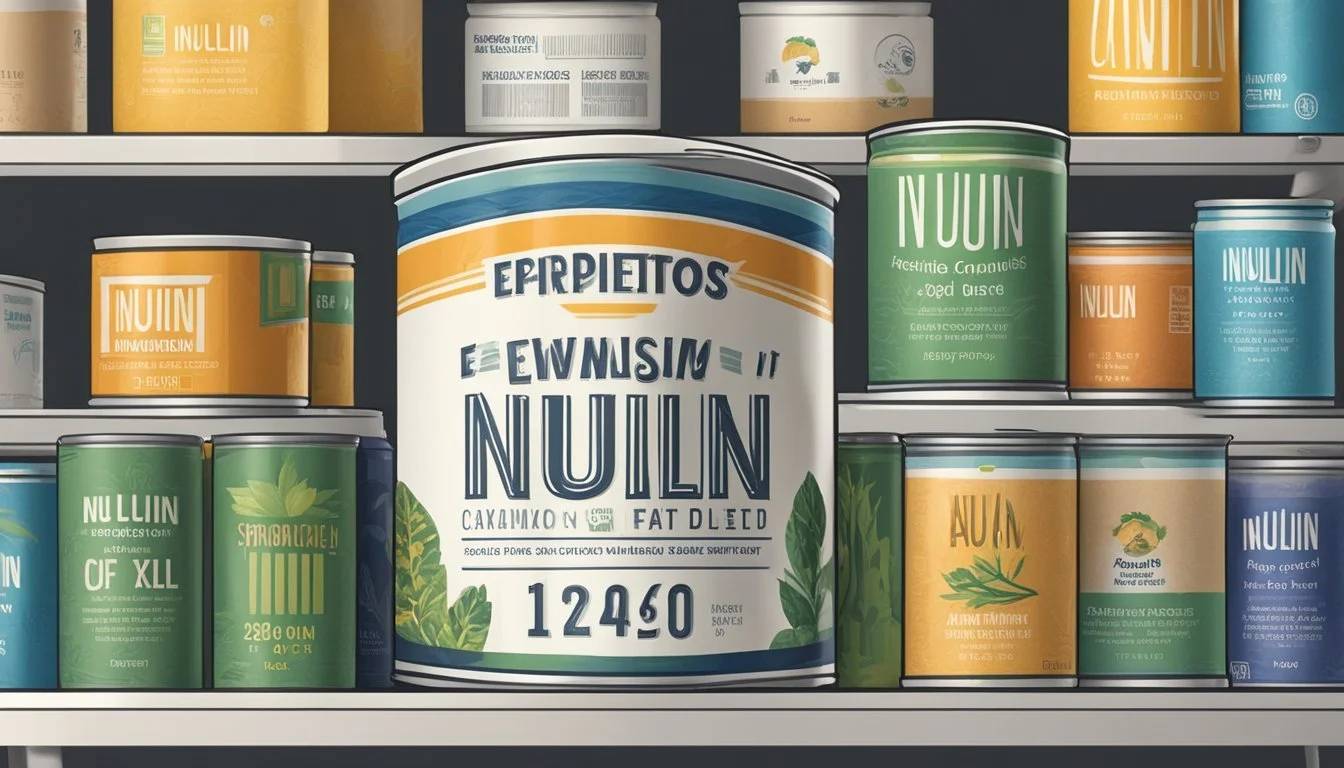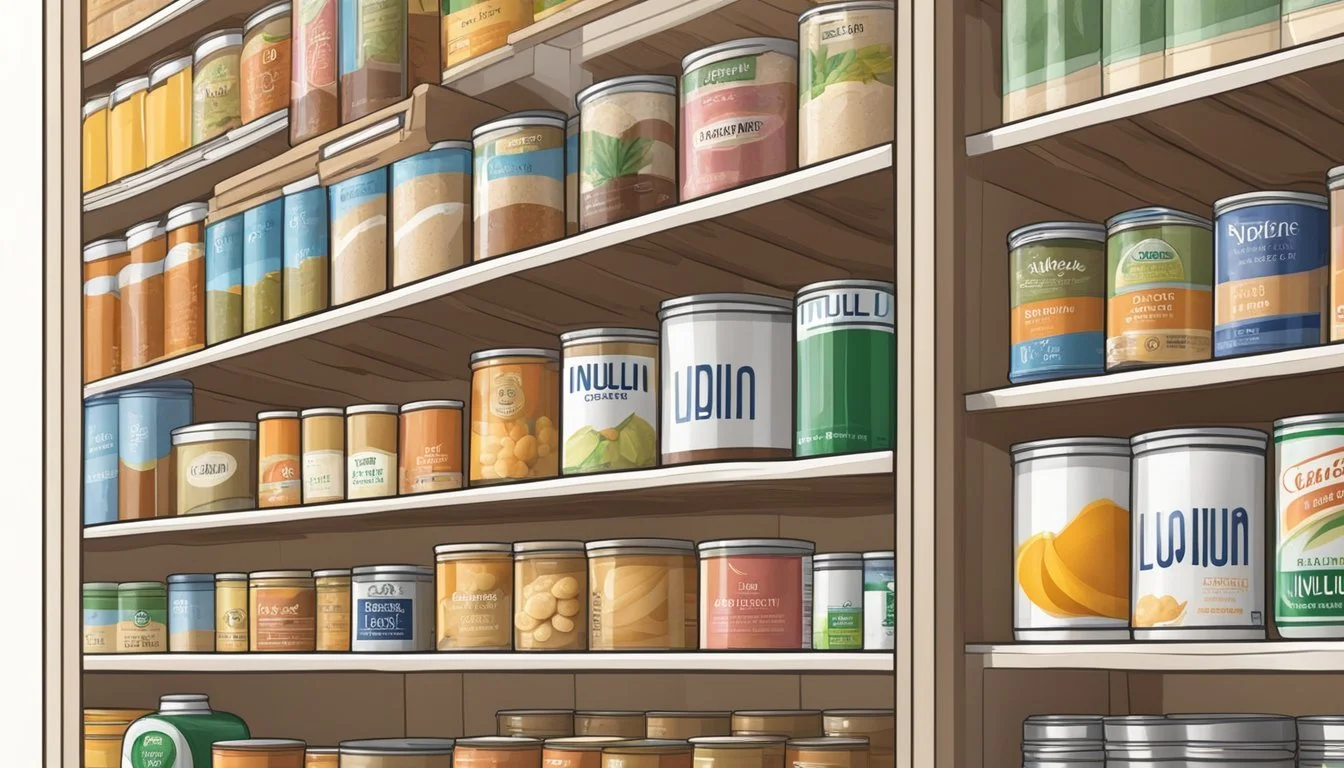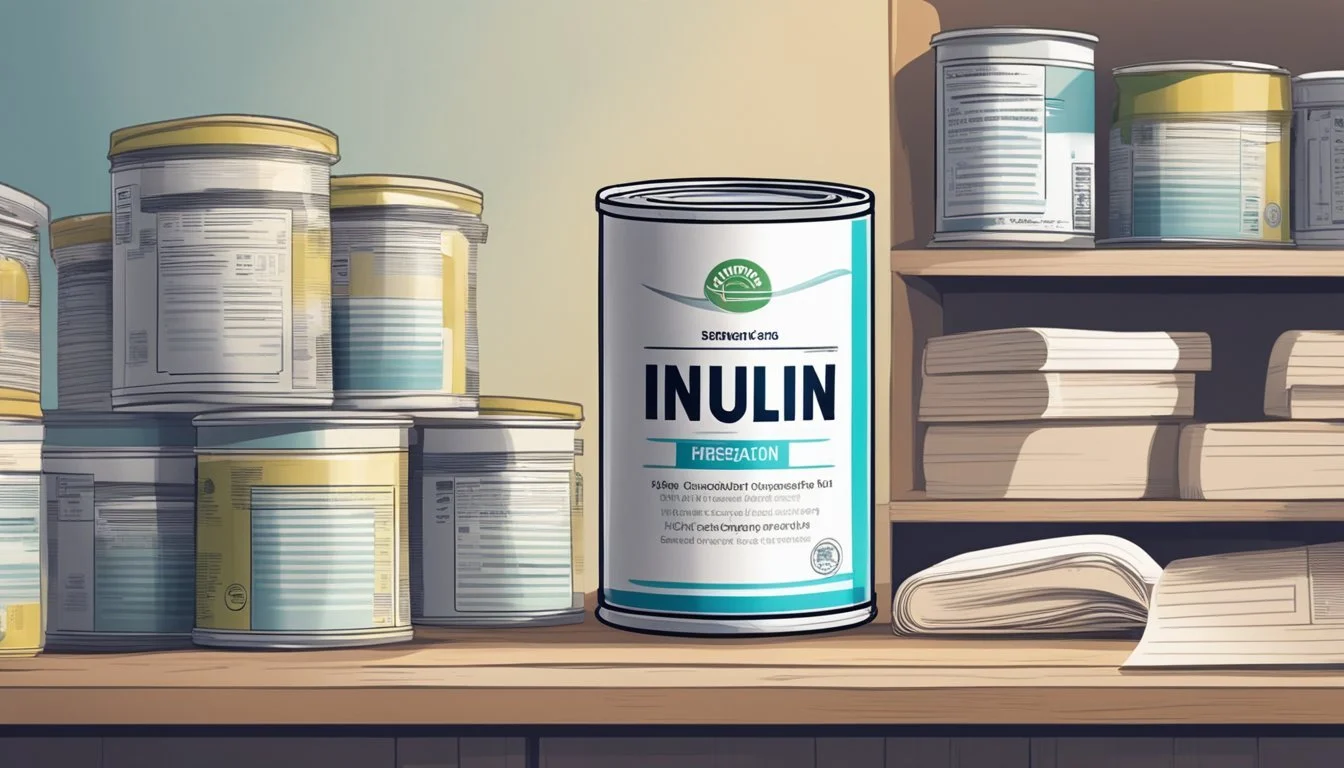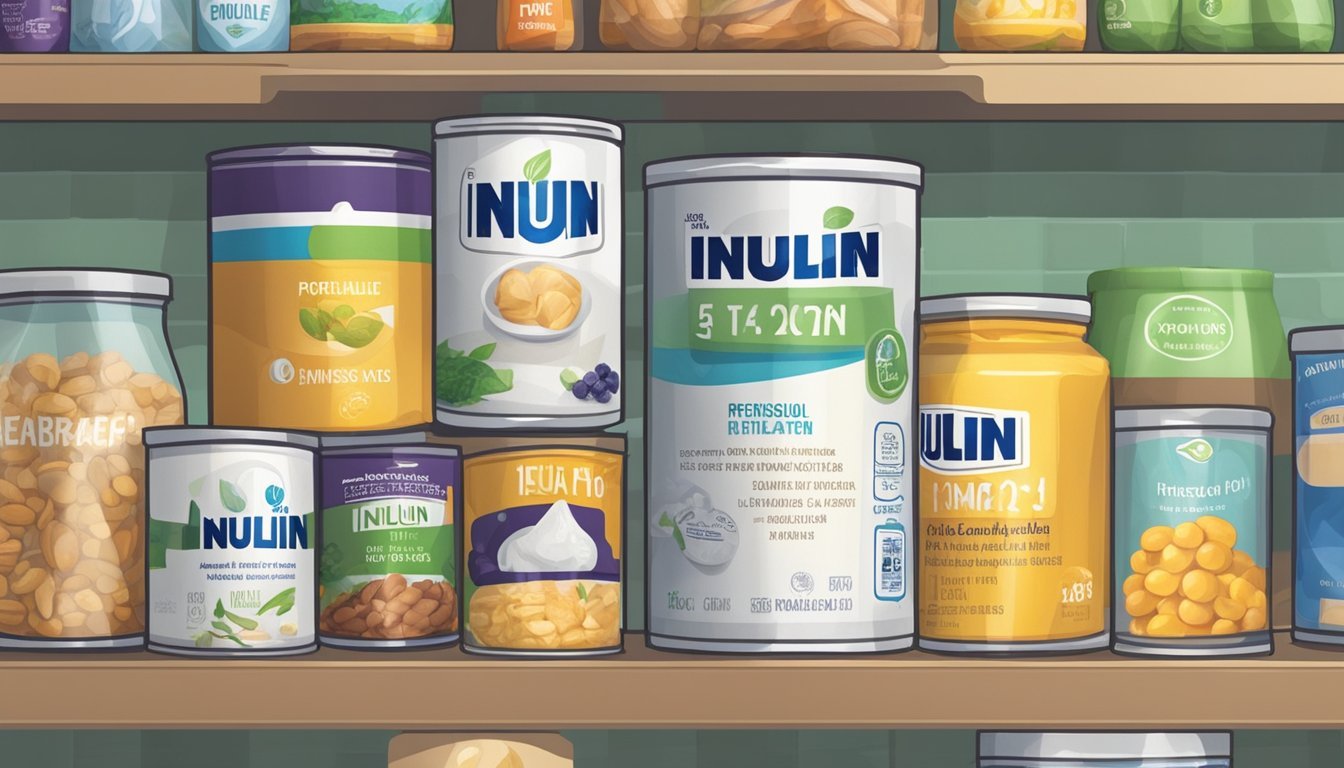How Long Does Canned Pumpkin Last?
Shelf Life and Storage Tips
Inulin, a prebiotic fiber, has gained attention for its advantageous effects on gut health. As a fructan, it is found naturally in many plants and is extracted primarily from chicory root for use in foods and supplements. It fosters a healthy gut environment by promoting the growth of beneficial bacteria. When encapsulated in a canned form for commercial or supplemental purposes, the shelf life of inulin becomes a point of interest for consumers concerned with maintaining its efficacy.
The stability of canned inulin hinges on appropriate storage conditions. Manufacturers typically indicate an expiration date on the product, signaling the period within which the inulin is expected to retain its quality and beneficial properties. However, factors such as temperature, humidity, and exposure to light can play significant roles in determining how long canned inulin remains viable.
Understanding the interactions between inulin and the microbial communities it supports involves recognizing that while it is stable under various conditions, its prebiotic function is optimized when it is consumed before the expiration date and stored according to recommendations. Ensuring that inulin is consumed while its prebiotic effect is at its peak supports the best outcomes for gut bacteria health.
Understanding Canned Inulin
Canned inulin offers a convenient way to add prebiotic fiber to the diet, integrating the nutrition of certain fruits and vegetables into processed foods through preservation.
Defining Inulin and Its Uses
Inulin is a type of soluble dietary fiber that functions as a prebiotic. Naturally present in many fruits and vegetables, it promotes the growth of beneficial gut bacteria. Inulin's presence in a diet aids digestive health and can enhance the absorption of minerals. It is commonly added to foods to increase their fiber content or to replace sugar or fat.
Nutritional Profile of Canned Inulin
Canned inulin maintains a nutritional profile similar to its natural state, offering a convenient fiber source with potential health benefits. The fiber is particularly useful as it can withstand the canning process without significant degradation, retaining its prebiotic properties.
Nutritional Value: Primarily composed of oligosaccharides.
Caloric Content: Minimal caloric value due to its non-digestible nature.
Solubility: Dissolves in water, aiding in its stability within canned goods.
The Canning Process and Inulin
The canning process involves high heat and airtight sealing to preserve food. This method is capable of maintaining the integrity of inulin:
Heat Treatment: Inulin is heat-stable, essential for surviving the canning process.
Sealed Environment: Prevents oxidation, maintaining inulin's prebiotic quality.
Shelf Life: Canned inulin's shelf life is extended due to the canning environment, enabling it to be stored and used over time without significant loss of nutritional value.
Storage Recommendations
When it comes to preserving the quality and efficacy of canned insulin, proper storage is crucial. Adherence to the recommended conditions ensures that insulin retains its potency until its expiry date.
Optimal Storage Conditions
Temperature: Canned insulin should be stored in a refrigerator between 36°F to 46°F (2°C to 8°C). Once opened and in use, it can generally be kept at room temperature, up to approximately 77°F (25°C), for a specified period, which commonly ranges from 28 to 42 days depending on the type of insulin.
Unopened insulin:
Store in the refrigerator
Check expiration date regularly
Opened insulin:
Keep at room temperature
Use within the insulin-specific recommended timeframe
Light and Air: Minimize exposure to direct light and air which can degrade insulin. It's advisable to keep insulin in its original packaging until use.
Importance of Cool and Dry Environment
Pantry Storage for Unopened Vials: For those who have yet to open their insulin vials or pens, a pantry or any cool and dry place away from direct sunlight serves as adequate storage to maintain insulin's stability before its use. Keep it away from any heat sources or fluctuations in temperature.
Cool: Lower than room temperature but not cold enough to freeze
Dry: An area with low humidity to prevent degradation
Consistently Stored: Avoid storing insulin with items that can cause temperature fluctuations like a stove or refrigerator motor.
Maintaining a cool and dry environment is essential to prolong the functional shelf life of canned insulin.
Shelf Life of Canned Inulin
Canned inulin's shelf life is influenced by storage conditions and can be detected for spoilage through visual and textural changes. Proper storage ensures maximum quality and safety.
Factors Influencing Shelf Life
Storage Conditions: They must remain consistent with minimal exposure to heat and light.
Temperature: Store in a cool, dry place below 75°F (24°C).
Light Exposure: Keep away from direct sunlight.
Quality Preservation: Maintains highest quality within the first year of canning.
Expiration Dates: Always adhere to labeled expiration dates for safety.
Type of Foods: Low-acid foods can last longer than high-acid foods when canned.
Signs of Spoilage in Canned Inulin
Visual Inspection:
Rust and Dents: Cans should be free from any rust, dents, or damage.
Bulging or Leaking: Indicates potential spoilage or contamination.
Product Inspection: Canned inulin should maintain its original color and consistency. Presence of mold or off-odors signifies spoilage.
Food Safety Considerations
When it comes to canned inulin, food safety is paramount. Consumers should be aware of can integrity, the risks of foodborne illnesses, and consumption guidelines to mitigate health hazards.
Recognizing Compromised Cans
Can integrity is a critical factor in determining the safety of canned inulin. Consumers should inspect cans for signs of spoilage before use. Cans that show bulges, leaks, or rust may indicate the presence of Clostridium botulinum, a bacterium that can cause botulism, a life-threatening illness. Any evidence of oxidation, such as discoloration or off-odors, suggests the food may be spoiled and should not be consumed.
Preventing Foodborne Illnesses
Maintaining the safety of canned inulin also involves proper storage and handling. Cans should be stored in a cool, dry place and kept away from extreme temperatures to prevent the proliferation of toxins produced by bacteria. It is essential to handle the cans with clean hands and equipment to reduce the risk of contamination and to follow a 'first in, first out' approach to ensure older products are used before newer ones.
Guidelines for Consumption
The consumption of canned inulin should adhere to safety guidelines. While canned foods can last for several years, it's important to adhere to the expiration or 'best by' dates provided by manufacturers. If a can appears intact but is past its date, consumers should err on the side of caution. If the inulin powder within smells or appears abnormal, it should be discarded immediately to prevent the risk of consuming a potentially harmful toxin.
Maintaining Nutritional Value
Preserving the nutritional value of canned inulin is paramount to retaining its benefits, such as promoting gut health. Proper storage conditions significantly influence the quality and freshness of inulin.
Influence of Storage on Nutrition
The nutritional quality of inulin can be affected by how it is stored. Exposure to light and heat can initiate oxidation, which may degrade vitamins and other nutrients, potentially altering the texture and effectiveness of the fiber.
Temperature: Store canned inulin in a cool, dry place to prevent the degradation of its nutritional profile.
Light Exposure: Keep the product away from direct light to protect the nutritional content and prevent the loss of potency.
Best Practices for Preserving Quality
Adhering to specific storage recommendations ensures the maintenance of the quality and freshness of canned inulin, safeguarding its prebiotic effects.
Seal Integrity: Always check that the can or container is properly sealed to prevent contamination and moisture ingress, which could compromise quality.
Shelf Life: Follow the product’s shelf life indications to ensure one consumes the inulin while it maintains its peak quality.
By observing these best practices, individuals can ensure they receive the full nutritional value of canned inulin.
Health Benefits and Concerns with Inulin
Inulin, a prebiotic fiber, has tangible effects on gut health and metabolic processes, yet it may also pose some side effects for certain individuals. It's important that consumers are aware of both the potential health rewards and risks associated with inulin intake.
Promoting Gut Health
Inulin is a prebiotic that fosters healthy gut bacteria balance, which is crucial for gut health. By feeding the beneficial bacteria, it can enhance gastrointestinal function and bolster the immune system. This dietary fiber's fermentable nature allows it to be metabolized by gut bacteria, thereby aiding in the reduction of disease risk.
Impact on Blood Sugar and Weight Management
Regular inulin intake has a role in blood sugar control which can be beneficial for diabetes management. It's been observed that inulin can slow gastric emptying, leading to a gradual release of glucose into the bloodstream. This mechanism can assist in preventing spikes in blood sugar levels, which is particularly significant for diabetic individuals. Moreover, due to its gel-forming capacity, inulin may contribute to a sensation of fullness, thereby supporting weight management efforts and potentially aiding in the prevention of obesity.
Potential Side Effects and Allergies
Despite the advantages, inulin consumption might result in side effects such as bloating, diarrhea, or other digestive discomforts, especially when consumed in large amounts. People with allergies or sensitivities to inulin might experience adverse reactions, although severe allergic reactions like anaphylaxis are rare. It's important to monitor one's body's response to inulin and adjust the intake accordingly. Those with existing gastrointestinal issues should consult healthcare professionals before adding inulin to their diets.
Regulatory Standards and Guidelines
The United States Department of Agriculture (USDA) and the Food and Drug Administration (FDA) are the primary regulatory bodies that set the standards for food quality and preservation, including canned products such as inulin. These regulations are crucial for ensuring that consumers receive safe and high-quality food products. The guidelines also determine the shelf life and proper labeling of these items, including expiration and sell-by dates.
USDA and FDA Regulations
The FDA is responsible for regulating the safety and labeling of canned goods, including inulin. Inulin itself was recognized by the FDA as a safe food substance in 2003, therefore, it is subject to the general food safety standards set by this agency. The FDA's regulations on canned food state that a product's standard of identity and standard of fill must be compliant with their rules to ensure consistency and consumer trust.
The USDA provides guidance on the storage life of canned goods. According to the USDA, most canned foods are safe and retain their quality for a considerable amount of time when stored properly. Although inulin is not specifically mentioned, it's common for canned goods to last for years under ideal conditions. For food processing, manufacturers must follow the USDA's protocols on processing, handling, and storing to mitigate the risk of foodborne illnesses.
Labeling and Expiration Dates
Proper labeling is essential for informing consumers about the shelf life and safety of food products. The FDA mandates clear labeling of expiration dates, including sell-by dates, use-by dates, and expiration dates. However, it is critical to note that:
Sell-by dates are intended to inform retailers when to remove the product from shelves but are not a safety date.
Use-by dates are the manufacturer's estimate of how long the product will remain at peak quality.
Expiration dates may indicate the last date of the product's optimal quality but do not necessarily mean the food is unsafe to consume after this date.
Labels must accurately reflect the contents and provide information on preserving the product's quality, such as storage conditions and handling instructions. Consumers should adhere to these dates for the best experience with their food products, including canned inulin.
Home Canning vs. Commercial Canning
When comparing home canned goods with commercially canned foods, distinct differences emerge, particularly in terms of shelf life and safety indicators of the preservation process.
Differences in Shelf Life
Home Canned Goods: Typically, home canned goods, such as those containing inulin, have a recommended shelf life of about one year for optimal quality if the canning process follows safety guidelines meticulously.
Optimal Flavor and Quality: Up to 1 year
Safety: May remain safe beyond a year if no signs of spoilage
Commercially Canned Foods: These products undergo a highly controlled canning process, enabling them to generally have a longer shelf life due to stricter standards and the absence of variability that comes with home canning.
High-Acid Foods: About 1.5 years from packing
Low-Acid Foods: Up to 5 years from packing
Identifying Safe Home Canned Goods
When assessing whether home canned goods, such as those containing inulin, are safe for consumption:
Seal Integrity: The seal must remain unbroken with a vacuum seal intact to prevent bacterial contamination.
Good Condition: The jar itself should not show any signs of damage or discoloration.
Storage Conditions: Properly store canned goods in cool, dry places away from light and significant temperature changes.
A visual and olfactory inspection is paramount; if there are signs of spoilage, such as rust, leaking, or an off-odor, the safety of the product cannot be assured.
FAQs on Canned Inulin Consumption
Canned inulin, a popular dietary fiber supplement, retains its nutritional benefits when stored properly and consumed before its expiration date. Safety and quality are paramount in maintaining the efficacy of inulin as part of a healthy diet.
Common Questions Answered
Is canned inulin safe to consume after the expiration date?
It is not recommended to consume canned inulin past its expiration date as the quality may degrade, and there could be a risk of food poisoning.
How does inulin impact nutrition?
Inulin is a soluble dietary fiber that promotes digestive health, supports the growth of beneficial gut bacteria, and can assist in maintaining a balanced diet.
Does inulin in canned form retain its fiber content?
Yes, the fiber content of canned inulin remains intact as long as the product is stored correctly and unopened until its use.
Can inulin from cans interact with protein and vitamins in my diet?
Inulin does not interfere with protein absorption, but rather, it can aid in the absorption of certain minerals and vitamins, enhancing overall dietary benefits.
What are the signs that canned inulin has gone bad?
Indicators of spoiled inulin include an unusual smell, a change in color, or any visible signs of contamination. If in doubt, it is safest to dispose of the product.
What are the storage recommendations for maintaining the quality of canned inulin?
Canned inulin should be kept in a cool, dry place away from direct sunlight and should remain sealed until ready to use, to preserve its quality and efficacy.

